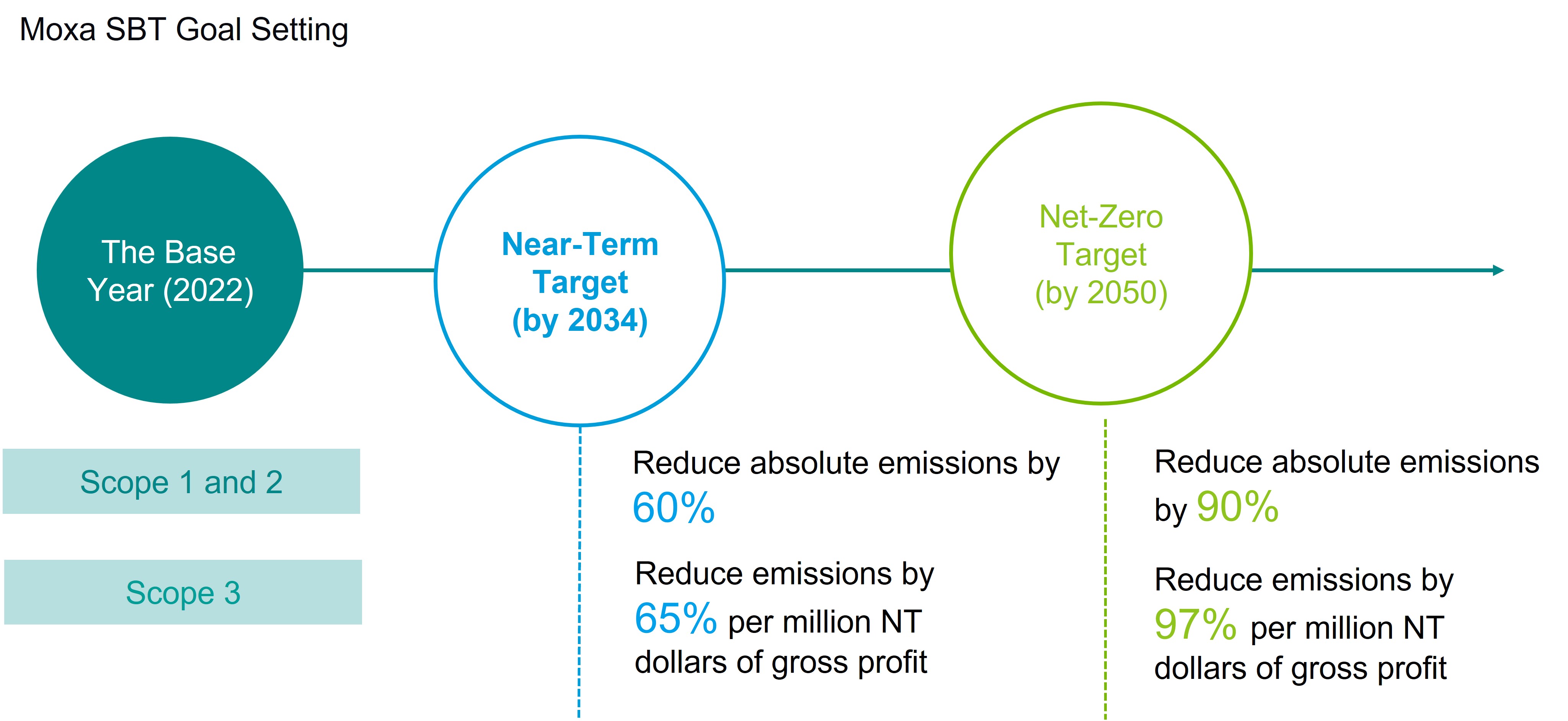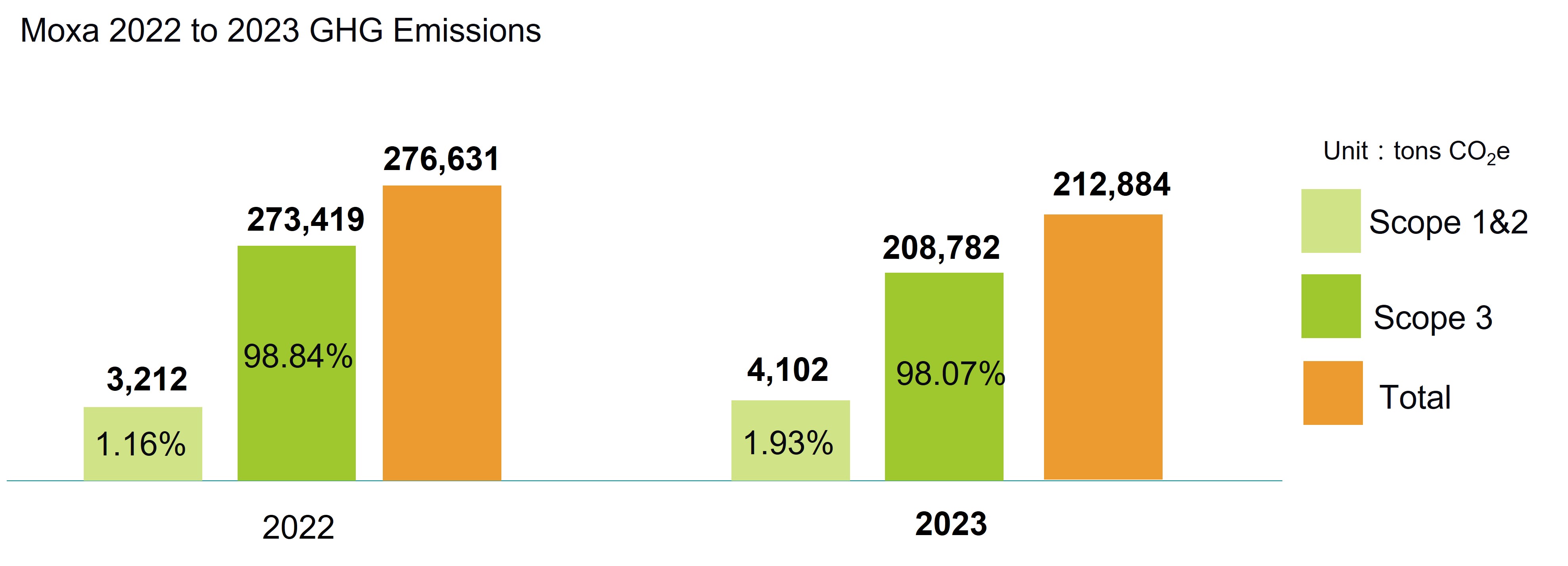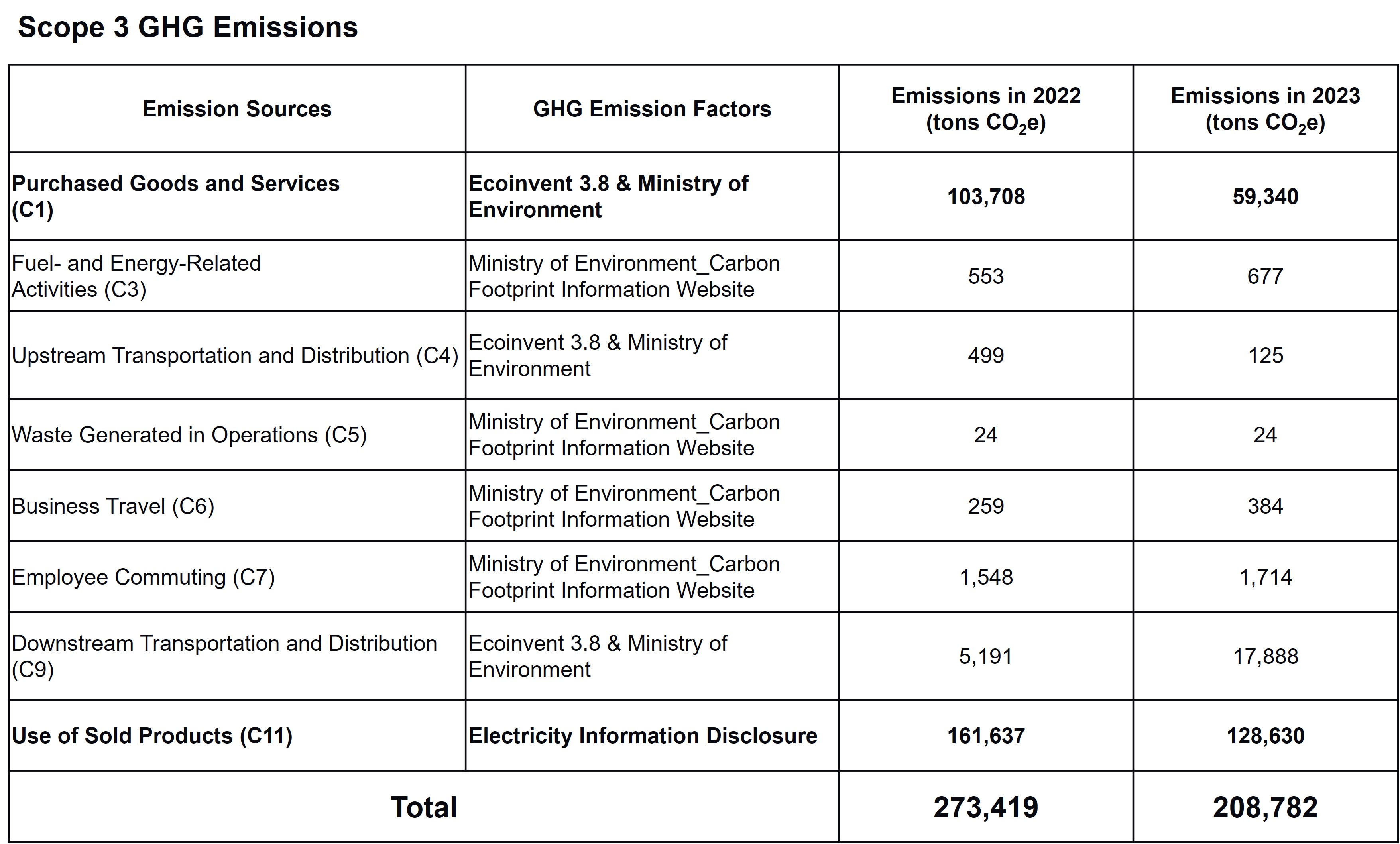Our Goal
We pledged to the Science-Based Targets Initiative (SBTi) in December 2023 to showcase our dedication to achieving net-zero emissions. Our goal is to have science-based targets (SBTs) in place and assessed by the SBTi by the end of 2024. By taking this action, we ensure that our carbon reduction approach aligns with international trends and successfully reaches the goal of net-zero emissions by 2050.

Our Status
In 2023, we adopted ISO 14064-1 for GHG inventory assessments. Besides focusing on Category 1 and Category 2 greenhouse gas emissions in our offices and production plants, we have also expanded our GHG emissions inventory checks to include Categories 3 to 6 in the upstream and downstream supply chain. These checks assess the carbon footprint of raw material production, track transportation routes, and measure emissions from outsourced production processes.
Moxa’s total greenhouse gas emissions in 2023 were 212,884 metric tons of CO2, with Scope 3 accounting for 98.07%. Scope 1 and 2 emissions, accumulated from our operations and production, accounted for only 1.93%. Further analysis of Scope 3 showed that the purchased goods and services (C1) and use of sold products (C11) were the major contributors, making up 90.03% of Scope 3 emissions. Thus, carbon reduction in the value chain depends on the procurement of goods and services and product usage. Furthermore, we set an example by including electricity usage in its key carbon reduction strategies.

Note 1: The six greenhouse gases assessed under Scope 1 and Scope 2 include carbon dioxide (CO2), methane (CH4), nitrous oxide (N2O), hydrofluorocarbons (HFC), perfluorocarbons (PFC), and sulfur hexafluoride (SF6).
Note 2: The greenhouse gas emission factors are based on the greenhouse gas emission factor management table announced by the Taiwan Environmental Protection Administration's national registration platform. The emission coefficient of electricity is based on the notification by the Energy Administration, Ministry of Economic Affairs.
Note 3: The global warming potential (GWP) is quoted from the Sixth Assessment Report of the IPCC.

Note 1: The Greenhouse Gas (GHG) Protocol is a globally recognized framework for measuring and managing greenhouse gas emissions. Developed through a partnership between the World Resources Institute (WRI) and the World Business Council for Sustainable Development (WBCSD), it provides comprehensive standards and guidelines for businesses, governments, and organizations to track their GHG emissions. The GHG Protocol's Corporate Value Chain (Scope 3) Standard identifies 15 categories. Please refer more details from the document of Technical Guidance for Calculating Scope 3 Emissions.
Note 2: According to Moxa's Scope 3 audits include seven items, including purchased goods and services (C1), upstream transportation and distribution (C4), waste generated in operations (C5), business travel (C6), employee commuting (C7), downstream transportation and distribution (C9), and use of sold products (C11). The availability and accuracy of supporting data are taken into consideration. The data for use in sales of products (C11) had not been externally verified in 2022, but it was completed in 2023.
Our Strategy and Actions
We have identified three key sources of emissions to reach the net-zero emissions goal by 2050: "Purchased Goods and Services", "Use of Sold Products ", and " Electricity Consumption". We have proposed three key strategies: Low-carbon Operational Practices, Low-carbon Product Design, and Low-carbon Value Chain, along with nine actions to move towards net-zero emissions.
| Key Strategies |
Low-carbon actions |
Description |
| Low-carbon Operation Practices |
Low-carbon Operation Practices |
Monitoring energy-consuming equipment in the manufacturing plant, regularly assessing energy efficiency and analyzing the characteristics and energy consumption of high-energy-consuming equipment, making adjustments and improvements for energy efficiency, and replacing outdated equipment ones. |
| Energy use behavior and efficiency optimization |
Evaluating the energy usage patterns of manufacturing plants and office areas, such as the operation behavior of equipment and processes, energy efficiency of office lighting and air conditioners, etc., to optimize energy management, reduce equipment operating time and the frequent switching of equipment, and improve the effective use of lighting and air conditioning. |
| Renewable energy usage |
Assessing Moxa’s future electricity demands, setting renewable energy goals, and coordinating renewable energy procurement operations. |
| Low-carbon Product Design |
Develop products with a low energy consumption |
Analyzing product energy consumption distribution, establishing product energy consumption design criteria, incorporating energy saving considerations when developing new products, and evaluating old products for low energy consumption to enhance the energy efficiency of products. |
| Reduction of raw materials |
Reviewing the feasibility of reducing product weight through adjustments in material composition, leading to the decreased use of raw materials. |
| Green packaging design |
We choose eco-friendly packaging and buffering materials based on product packaging design parameters, minimizing their usage and optimizing packaging volume to lessen environmental impact. |
| Product modular design |
Enhancing product waste recycling and reducing carbon emissions by promoting modular design, minimizing materials and parts, and facilitating the recycling and reuse of components. |
| Low-carbon Value Chain |
Promoting carbon reduction in the supply chain |
Help outsourced and high-carbon emission suppliers set carbon reduction goals, promote carbon reduction actions, and monitor supply chain carbon reduction performance. |
| Reducing logistics carbon emissions |
Transportation efficiency is improved through enhanced packaging efficiency, which reduces unnecessary space. We also monitor the vehicles and fuels used by logistics operators, and we specifically select those with plans to reduce carbon emissions. |
More details can be found in the featured stories 1 and Chapter 3.1 on Green Manufacturing and Design of Moxa Susatinability Report 2023.